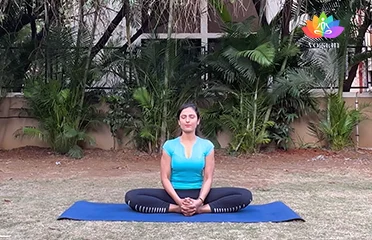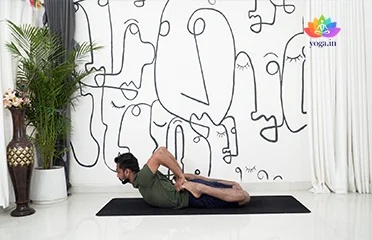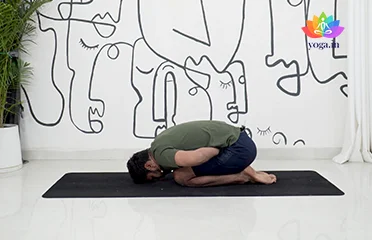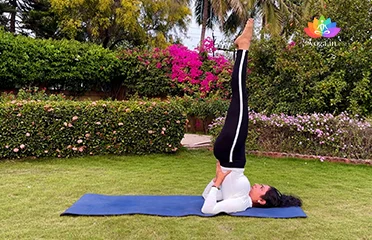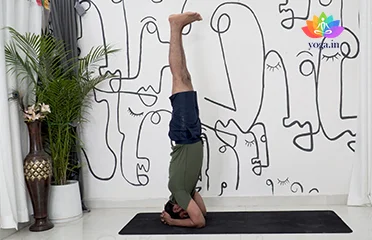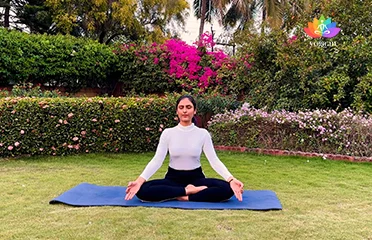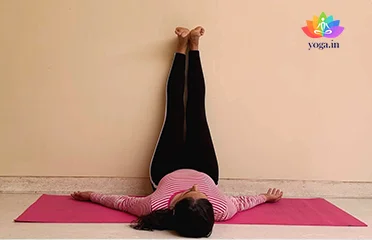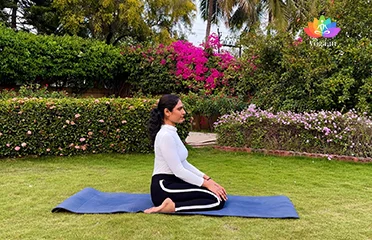Bhadrasana (Gracious Pose | Butterfly Po
भद्रासन / Gracious Pose | Butterfly Pose
The Sanskrit name is derived from Bhadra (भद्रा) meaning gracious, [�K]
Bhekasana (Frog Pose II)
भेकासन / Frog Pose II
The Sanskrit name is derived from Bheka (भेका) meaning frog and asana [�K]
Mandukasana (Frog Pose)
मण्डुकासन / Frog Pose
The Sanskrit name is derived from Manduka (मण्डुका) meaning frog [�K]
Sarvangasana (Shoulderstand)
सर्वाङ्गासनI / Shoulderstand
The Sanskrit name is derived from Sarva (सर्वाङ्ग) meaning all, [�K]
Sirsasana (Headstand)
शीर्षासन / Headstand
The Sanskrit name is derived from Sirsa (शीर्ष) meaning head and asana [�K]
Svastikasana (Auspicious Pose)
स्वस्तिकासन / Auspicious Pose
The Sanskrit name is derived from Swastika (स्वस्तिका) meaning [�K]
Viparita Karani (Legs Up The Wall Pose)
विपरिता करणी / Legs Up The Wall Pose
The Sanskrit name is derived from Viparita (विपरिता) meaning inverted [�K]
Virasana (Hero Pose)
वीरासन / Hero Pose
The Sanskrit name is derived from Vira (वीरा) meaning hero or a warrior [�K]
Yoga for Healthy Legs – Alleviating Varicose Veins Naturally
What is Varicose Veins:
Varicose veins are enlarged, twisted veins, usually found in the legs, caused by weakened vein walls and valves, leading to poor blood circulation.
Symptoms of Varicose Veins:
- Swollen, bulging veins visible under the skin.
- Aching or throbbing pain in the legs.
- Itchy or irritated skin around affected veins.
- Muscle cramps or fatigue in the legs.
- Discomfort worsened by prolonged standing or sitting.
Causes of Varicose Veins:
- Weakened vein walls and valves due to age or genetics.
- Prolonged standing or sitting, limiting blood circulation.
- Pregnancy-related hormonal changes affecting vein walls.
- Obesity, adding pressure on leg veins.
- Chronic constipation leading to increased abdominal pressure.
How Yoga and Pranayama can help:
Yoga and pranayama offer gentle solutions for managing varicose veins by improving blood circulation and reducing pressure on the veins.
Diet for Varicose Veins:
- Increase fiber intake through fruits and vegetables.
- Stay hydrated to support blood circulation.
- Consume foods rich in antioxidants, like berries.
- Include Omega-3 fatty acids from sources like flaxseeds.
- Limit salt intake to prevent water retention.
Caution for Varicose Veins:
- Avoid prolonged sitting or standing.
- Elevate legs when resting to reduce swelling.
- Wear compression stockings for added support.
- Maintain a healthy weight to lessen pressure on veins.
- Practice yoga poses mindfully, avoiding strain on affected areas.
Contraindications:
- Individuals with open sores or ulcers on the affected area.
- Severe cases of varicose veins with complications.
- Recent surgery or injury in the affected leg.
- Pregnant women (specific poses).
- Consult a healthcare professional for personalized advice.
Integrating yoga, pranayama, and a balanced diet into your routine can help manage varicose veins naturally. It’s crucial to approach these practices with mindfulness and consult with a healthcare professional for personalized guidance. By incorporating these holistic approaches, you can promote better blood circulation, alleviate discomfort, and support overall leg health.


